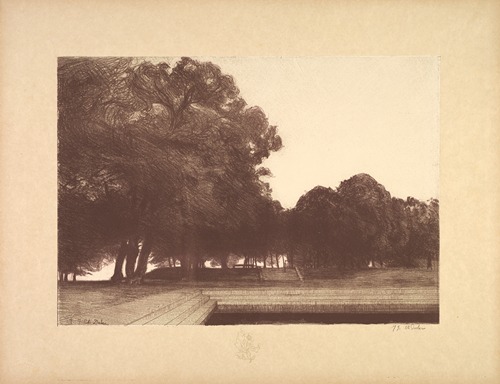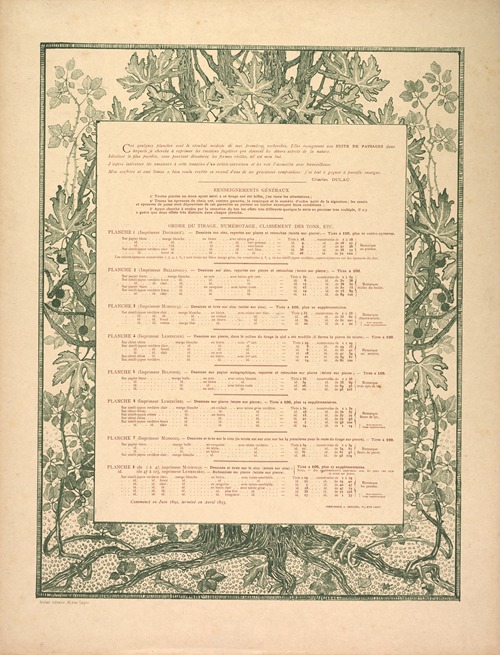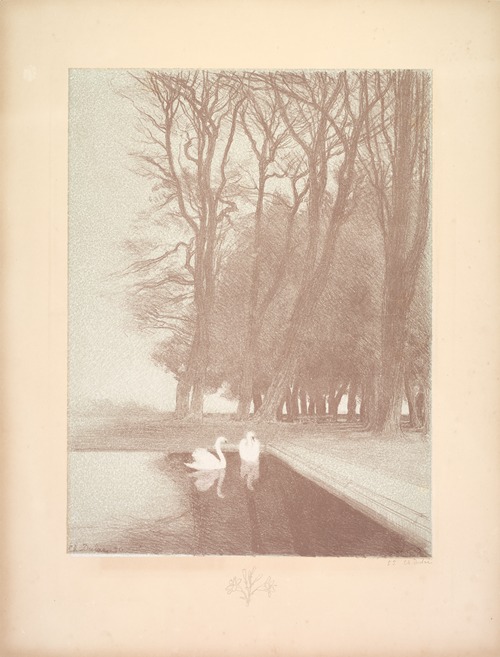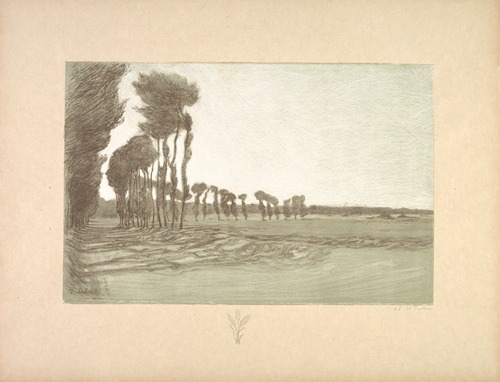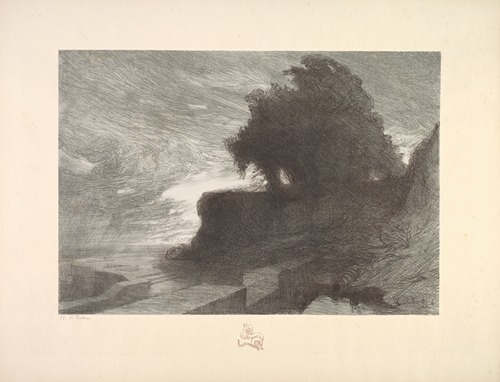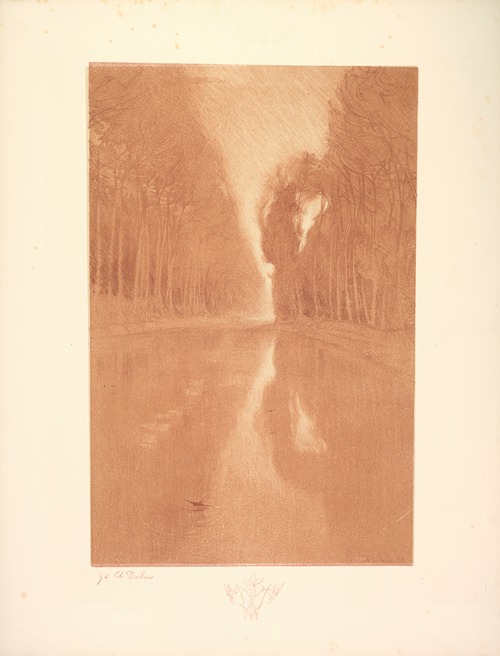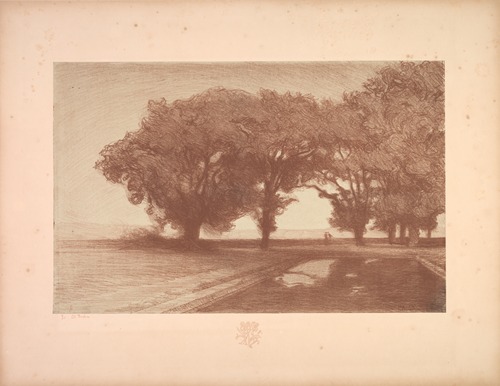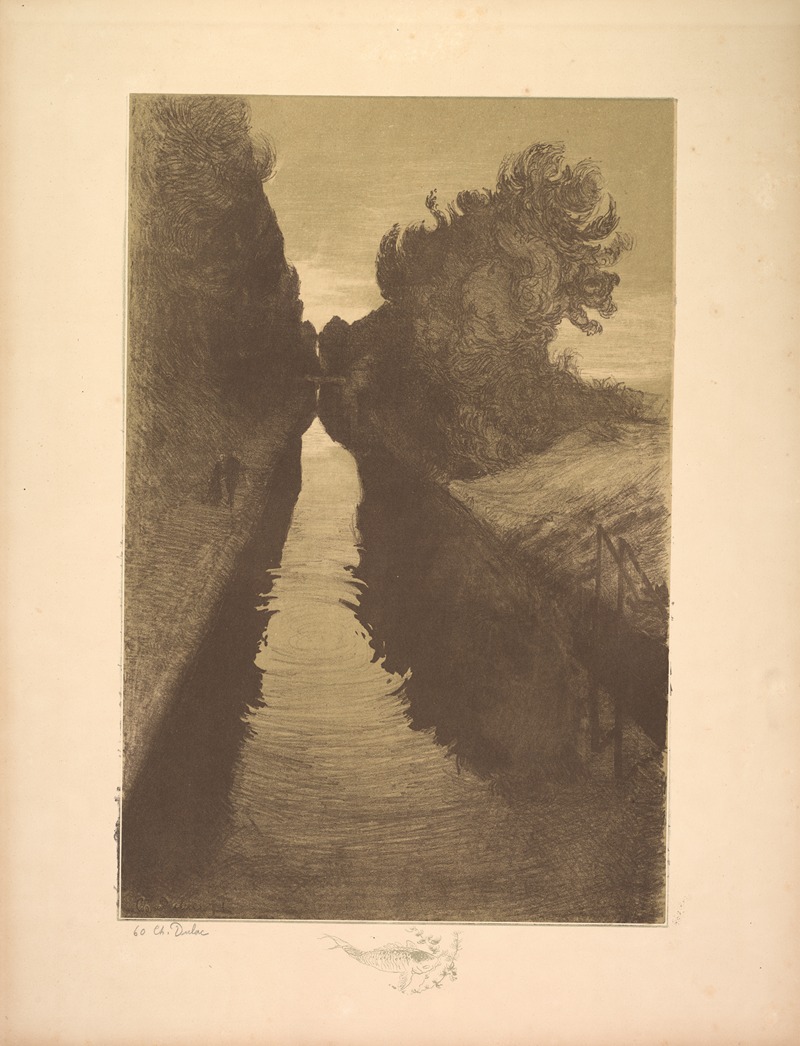
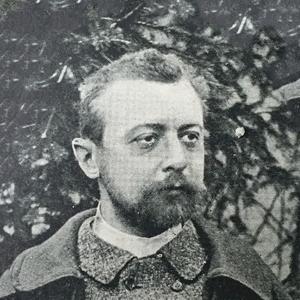
Dulac received his art training from Jacques-Fernand Humbert, Henri Gervex, Alfred-Philippe Roll, and Eugene Carriere. Early in his career he designed and painted stage sets for the Opera and was a decorative painter in the Lavastre atelier. Gradually he turned to fine art painting and began to exhibit at the Salon des Independants from 1890, and was elected an associate member of the National Society of Fine Arts in the same year. His work is little known today because he remained on the periphery of the well-known currents of late nineteenth-century symbolist art.
Around 1892 Dulac converted to Roman Catholicism, changed his Christian name to Marie-Charles, and turned to mysticallandscapes, which were enthusiastically received in an era of heightened religiosity. The landscape of Paris and its environs as well as the places he visited on his trips to England, Germany, Italy, and Belgium were his principal subjects. From 1893 Dulac depicted his idyllic landscapes mostly through lithography, favoring it as the more suitable medium to convey his paradisiacal interpretations of nature. The plates for his final series, Le credo, remained incomplete at the time of his death on 29 December 1898.
